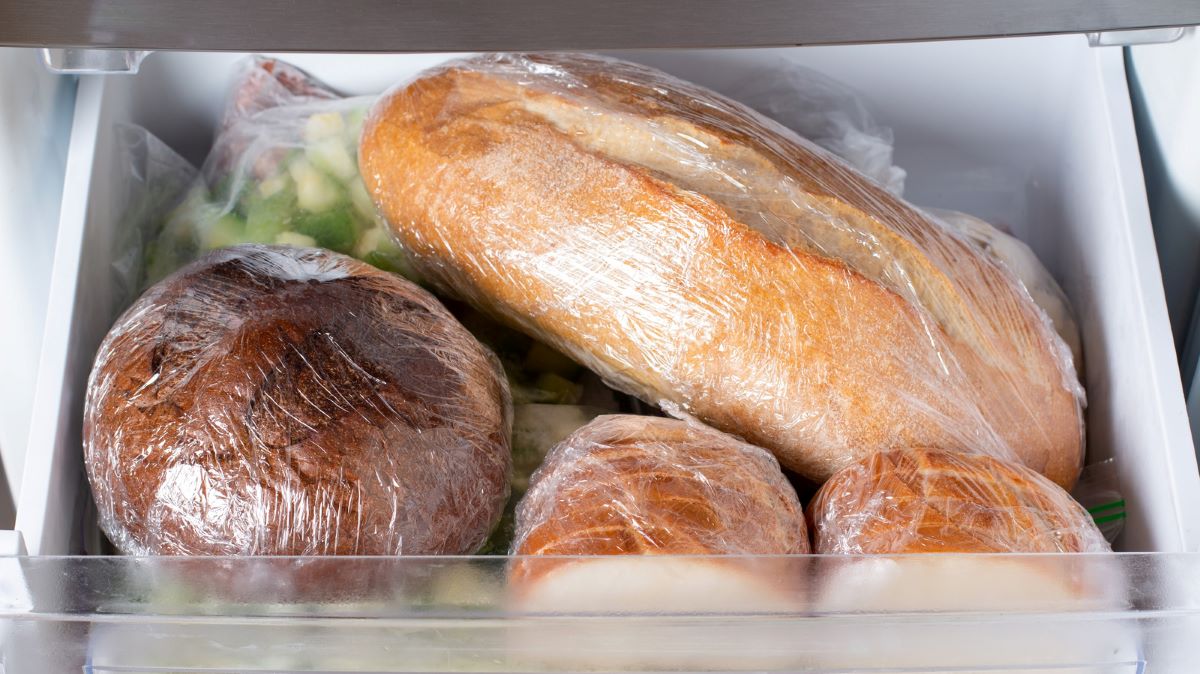

Articles
How To Store Bread In The Fridge
Modified: December 7, 2023
Learn how to store bread in the fridge to keep it fresh and extend its shelf life. Our articles provide helpful tips and tricks for proper bread storage.
(Many of the links in this article redirect to a specific reviewed product. Your purchase of these products through affiliate links helps to generate commission for Storables.com, at no extra cost. Learn more)
Introduction
Welcome to a world of delicious bread and the conundrum of how to store it properly. Whether you’re a bread enthusiast, a home baker, or simply someone who loves a fresh slice of bread, it’s important to know the best way to store your bread to maintain its freshness and quality.
When it comes to storing bread, the most common dilemma is whether to keep it at room temperature or in the refrigerator. The answer isn’t always straightforward, as it depends on various factors like the type of bread, climate, and personal preference.
In this article, we will explore the concept of storing bread in the fridge. We’ll delve into the reasons why some people choose to refrigerate their bread, the advantages and disadvantages of doing so, and provide you with practical tips on how to properly store bread in the fridge.
So, if you’ve ever wondered whether refrigeration could be the key to keeping your bread fresh and delicious, stick around as we uncover the ins and outs of storing bread in the refrigerator.
Key Takeaways:
- Refrigerating bread can extend its shelf life and prevent waste, making it ideal for artisanal, homemade, and gluten-free bread. Proper packaging and storage techniques are essential for maintaining freshness.
- While refrigeration benefits certain bread types, soft bread and freshly baked loaves are best kept at room temperature for optimal texture and flavor. Experimenting with storage methods can help find the best approach for each bread variety.
Read more: How To Store Tortillas In The Fridge
Why Store Bread in the Fridge?
While storing bread at room temperature is the norm for many, some individuals prefer to keep their bread in the fridge for extended freshness. There are a few reasons why storing bread in the fridge may be beneficial:
- Extended Shelf Life: Refrigeration slows down the growth of mold and bacteria, which can help to extend the lifespan of your bread. This is particularly useful if you tend to buy or bake bread in large quantities and want to make it last longer.
- Climate Considerations: In hot and humid environments, bread can become stale and moldy quickly. Refrigeration can help combat these issues by providing a cooler and drier environment, reducing the risk of spoilage.
- Reduced Waste: If you find yourself frequently throwing out stale bread because you can’t consume it quickly enough, refrigeration can help slow down the staling process, allowing you to utilize more of your loaf before it becomes inedible.
- Prevention of Pest Infestation: In some regions, particularly those prone to insect infestations, storing bread in the fridge can help keep bugs away, preserving the integrity of your bread and ensuring it remains pest-free.
While these reasons may make refrigeration seem like a tempting option, it’s important to note that storing bread in the fridge does have its drawbacks. These pros and cons can vary depending on the type of bread and personal preferences, which we will explore in the next section.
Pros and Cons of Refrigerating Bread
Refrigerating bread comes with both advantages and disadvantages. Let’s take a look at some of the pros and cons:
Pros
- Extended Freshness: One of the main advantages of refrigerating bread is that it keeps it fresh for a longer period. The cool temperature helps slow down the staling process, making your bread stay softer and more enjoyable for an extended time.
- Mold and Bacteria Prevention: Refrigeration creates an inhospitable environment for mold and harmful bacteria. This can be particularly beneficial if you live in a humid climate where bread tends to spoil quickly.
- Reduced Charcuterie: If you’re a fan of using stale bread for charcuterie boards or making breadcrumbs, refrigeration can help prevent your bread from becoming too hard, ensuring it remains suitable for these purposes.
Cons
- Accelerated Staling for Some Bread Types: While refrigeration can slow down staling for most bread, it can actually accelerate the process for bread with a high starch content, such as white bread or baguettes. These bread types may become dry and stale quicker when stored in the fridge.
- Loss of Freshness and Flavor: Refrigeration can affect the taste and texture of certain bread varieties. Some people argue that refrigerated bread lacks the fresh-out-of-the-oven aroma and flavor that you get when bread is stored at room temperature.
- Condensation and Moisture Issues: Bread stored in the fridge may be exposed to condensation, which can cause the bread to become soggy and lose its desired texture. Proper packaging and storing techniques can help mitigate this issue.
- Slower Toasting Process: Refrigerated bread may take longer to toast compared to bread stored at room temperature. If you’re in a rush or prefer quick toasting, this can be a slight inconvenience.
Considering these pros and cons, it’s essential to choose an approach based on your bread preferences and the specific type of bread you have. Now, let’s explore the best types of bread to store in the fridge.
Read more: How To Store Bread Dough In Fridge
Best Types of Bread to Store in the Fridge
While refrigeration can benefit certain types of bread, it may not be suitable for all varieties. Here are some bread types that generally fare well in the fridge:
- Artisanal Bread: Artisanal bread, such as sourdough or crusty baguettes, can benefit from refrigeration. The cool temperature helps maintain the bread’s structure and prevent mold growth, allowing it to stay fresh for longer.
- Homemade Bread: If you’ve baked your own bread at home, storing it in the fridge can help preserve its freshness and prevent spoilage. Homemade bread tends to have fewer preservatives, making it more susceptible to mold growth and staling.
- Gluten-Free Bread: Gluten-free bread often contains ingredients that make it more perishable than regular bread. Refrigeration can help extend its shelf life and maintain its texture and taste.
- Store-Bought Bakery Bread: Many commercially made bakery bread can benefit from refrigeration. These bread varieties often have a shorter shelf life due to the absence of preservatives, so keeping them in the fridge can help prolong their freshness.
On the other hand, certain bread types are better stored at room temperature. These include:
- Soft Bread: Soft bread, like sandwich bread or buns, contains ingredients that help it stay moist and soft for longer. Storing these types of bread in the fridge can cause them to become dry and lose their desired texture.
- Freshly Baked Bread: If you’ve just bought or baked a loaf of bread and plan to consume it within a day or two, there’s no need to refrigerate it. Freshly baked bread is best enjoyed at room temperature, with its optimal flavor and texture.
Remember, these guidelines are not set in stone, and personal preferences can vary. It’s always a good idea to experiment and find the storage method that works best for your favorite bread.
Now that we’ve explored the best types of bread to store in the fridge, let’s dive into the proper techniques for storing bread in the refrigerator.
How to Properly Store Bread in the Fridge
Storing bread in the fridge requires some attention to ensure it remains fresh and delicious. Follow these steps to properly store your bread in the refrigerator:
- Use airtight packaging: To prevent your bread from absorbing any unwanted odors or moisture, wrap it tightly in plastic wrap, aluminum foil, or place it in a resealable plastic bag. Make sure the packaging is airtight to retain freshness.
- Keep it away from other strong-smelling foods: Strong-smelling foods like onions or heavily spiced dishes can transfer their flavors to your bread. Store your bread away from these types of foods to maintain its taste and aroma.
- Store in the main section of the refrigerator: Place your bread in the main section of the fridge, away from the freezer compartment. The temperature in the main section is more consistent and less likely to cause freezer burn or excessive coldness.
- Avoid storing bread near the refrigerator vents: The vents in the refrigerator can emit cold air directly onto your bread, causing it to dry out quickly. Keep your bread away from these vents to maintain its moisture.
- Distribute the bread evenly: If you have multiple loaves of bread or slices, arrange them in a way that allows for proper air circulation. This helps prevent condensation and maintains the bread’s texture.
By following these storage techniques, you can maximize the freshness and lifespan of your refrigerated bread. However, keep in mind that bread stored in the fridge may require some additional attention to maintain its quality.
Next, let’s explore some tips for maintaining the freshness and quality of your refrigerated bread.
Storing bread in the fridge can actually make it go stale faster. It’s best to store bread at room temperature in a bread box or paper bag to maintain its freshness.
Tips for Maintaining Freshness and Quality
To ensure your refrigerated bread stays fresh and maintains its quality, here are some helpful tips:
- Only refrigerate fully cooled bread: Before placing your bread in the fridge, make sure it has completely cooled down. Warm bread can create condensation inside the packaging, leading to a soggy texture and potential mold growth.
- Store bread in smaller portions: If you have a large loaf of bread that you won’t consume all at once, consider slicing it and storing smaller portions in individual airtight bags. This allows you to take out only what you need and prevents exposing the entire loaf to air each time.
- Label and date the packaging: If you have multiple types of bread or different batches, labeling and dating the packaging can help you keep track of their freshness. It ensures you consume the oldest bread first, preventing waste.
- Inspect and remove any spoiled pieces: Regularly check your refrigerated bread for any signs of mold, discoloration, or off smells. If you find any spoiled pieces, promptly discard them to prevent the spread of mold to the rest of the bread.
- Don’t refrigerate bread for too long: While refrigeration can prolong the shelf life of bread, it’s important not to store it in the fridge for too long. Aim to consume refrigerated bread within 5-7 days to ensure its freshness and taste.
By following these tips, you can maintain the freshness and quality of your refrigerated bread for an extended period. However, if you find that your refrigerated bread has become stale or dry, don’t worry – there’s a way to revive it!
Let’s move on to the next section to discover how to revive refrigerated bread and bring it back to its delightful state.
How to Revive Refrigerated Bread
If your refrigerated bread has gone stale or lost its desirable texture, don’t fret! There are a few simple methods you can use to revive it and bring it back to life:
- Oven or toaster oven method: Preheat your oven to a low temperature, around 300°F (150°C). Moisten the surface of the bread with a bit of water or wrap it in a damp paper towel. Place the bread in the oven for a few minutes until it has heated through and regained its moisture. Alternatively, you can use a toaster oven to toast the bread lightly, which can help revive its crispness.
- Steaming method: If you have a whole loaf of bread, you can use the steaming method to revive it. Wet a clean kitchen towel or cloth, wring out the excess water, and wrap the bread in the moist towel. Place the wrapped bread in a preheated oven at a low temperature or on a steamer for a few minutes. The steam from the moist towel will help soften the bread and rejuvenate its texture.
- Slice and refresh method: If you have sliced bread that has become dry, you can refresh individual slices quickly. Moisten the slice lightly with water or brush it with a bit of melted butter. Then, heat a non-stick pan over medium heat and toast the bread on both sides until it regains its desired texture.
- Make breadcrumbs or croutons: If all else fails and your bread is too stale to revive, don’t throw it away! Stale bread is perfect for making breadcrumbs or croutons. Simply cut or tear the bread into small pieces, season with herbs and spices, and toast in the oven until crisp. You can use these versatile additions for various recipes.
By utilizing these methods, you can give your refrigerated bread a new lease on life and enjoy it as if it were freshly baked. However, it’s important to note that the effectiveness of these methods may vary depending on the bread type and its degree of staleness.
Now that you know how to revive your bread, it’s time to wrap up our article and summarize the key points.
Read more: How To Store Honey In Fridge
Conclusion
Storing bread in the fridge can be a helpful way to extend its freshness and lifespan, particularly for certain types of bread. However, it’s essential to consider the pros and cons, as well as the specific bread type, to determine the best storage method for your needs.
Refrigeration can provide benefits such as extended shelf life, mold prevention, and reduced waste. It can be particularly valuable for artisanal bread, homemade bread, gluten-free bread, and store-bought bakery bread. On the other hand, some bread types, like soft bread and freshly baked bread, are better stored at room temperature to maintain their desired texture and flavor.
Proper storage techniques include using airtight packaging, keeping bread away from strong-smelling foods, storing it in the main section of the fridge, and avoiding the refrigerator vents. These steps help maintain freshness and prevent unnecessary moisture or condensation.
To maintain the freshness and quality of refrigerated bread, consider storing fully cooled bread, portioning it into smaller amounts, labeling and dating the packaging, inspecting for spoilage, and consuming it within a reasonable timeframe. By following these tips, you can enjoy delicious refrigerated bread for an extended period.
If your refrigerated bread does become stale, you can revive it using methods like heating in the oven or toaster oven, steaming, or toasting lightly. Alternatively, repurposing stale bread into breadcrumbs or croutons is a practical and delicious option.
Ultimately, the choice to store bread in the fridge depends on personal preference, bread type, and specific circumstances. Experimenting with different storage methods can help you find the approach that best suits your needs and ensures you can savor fresh bread for longer.
So go ahead, explore the world of refrigerated bread and enjoy its extended freshness. With the right storage and proper techniques for revival, you can savor every slice and bite, making the most out of your bread-warming journeys.
Frequently Asked Questions about How To Store Bread In The Fridge
Was this page helpful?
At Storables.com, we guarantee accurate and reliable information. Our content, validated by Expert Board Contributors, is crafted following stringent Editorial Policies. We're committed to providing you with well-researched, expert-backed insights for all your informational needs.

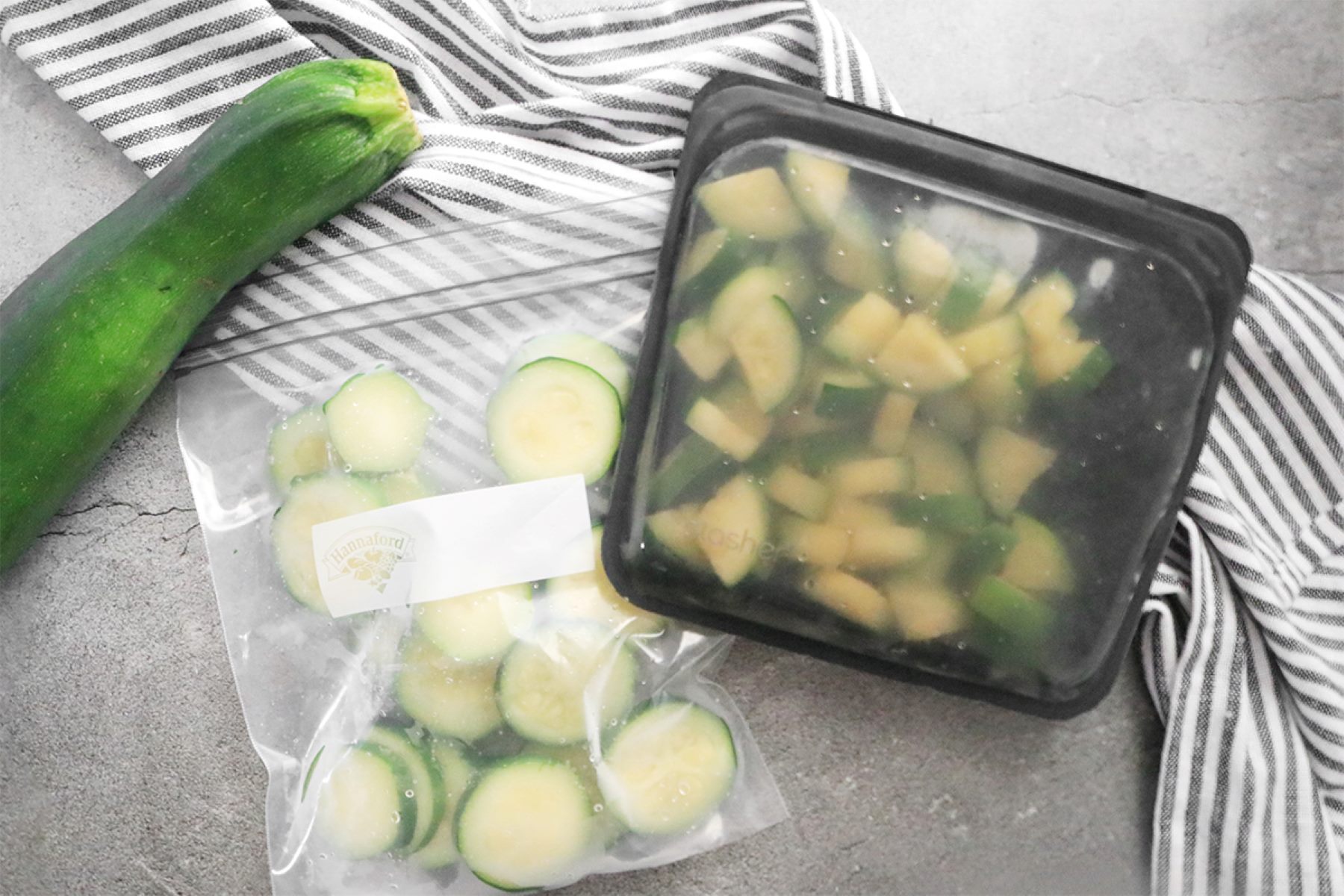
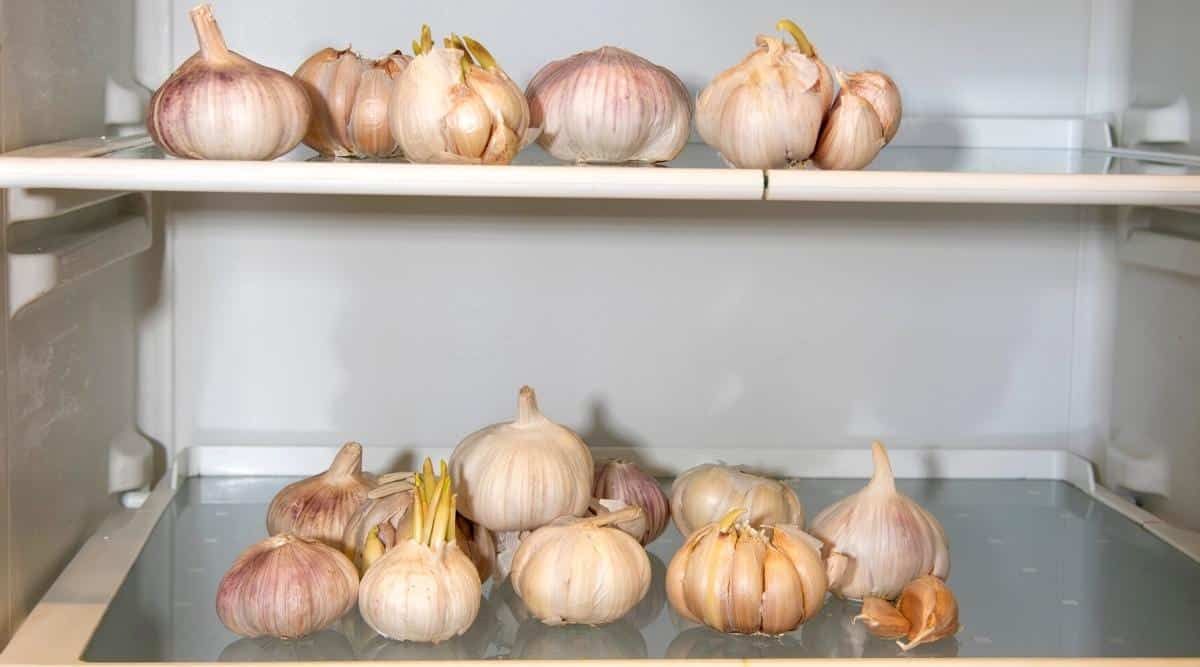

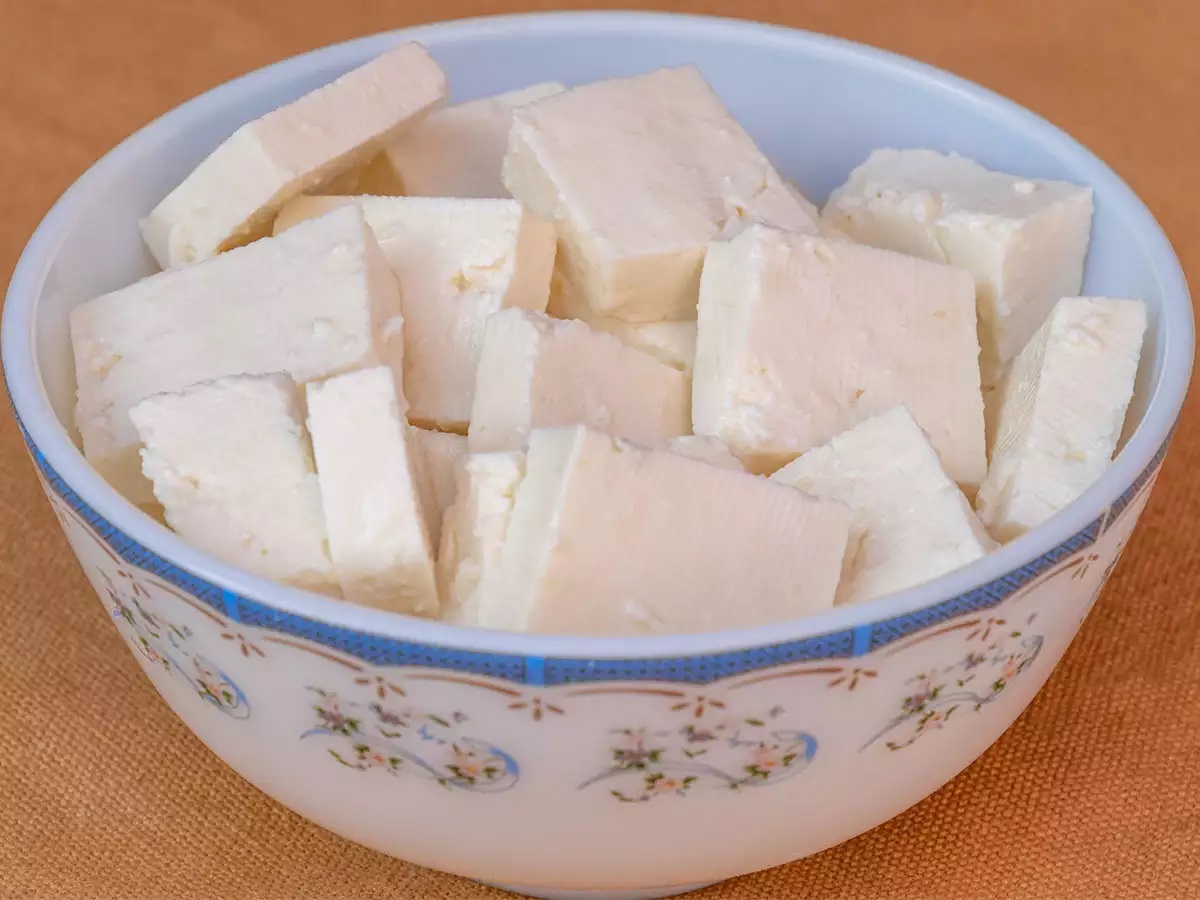




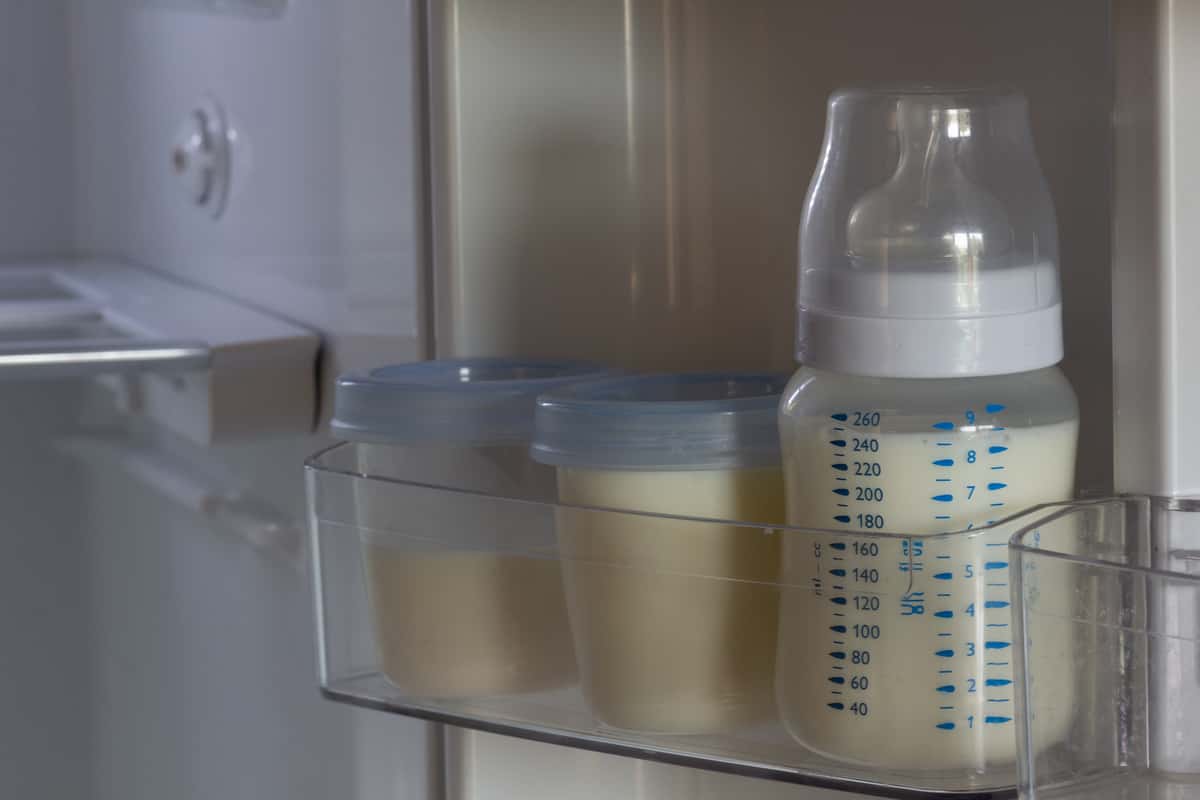




0 thoughts on “How To Store Bread In The Fridge”